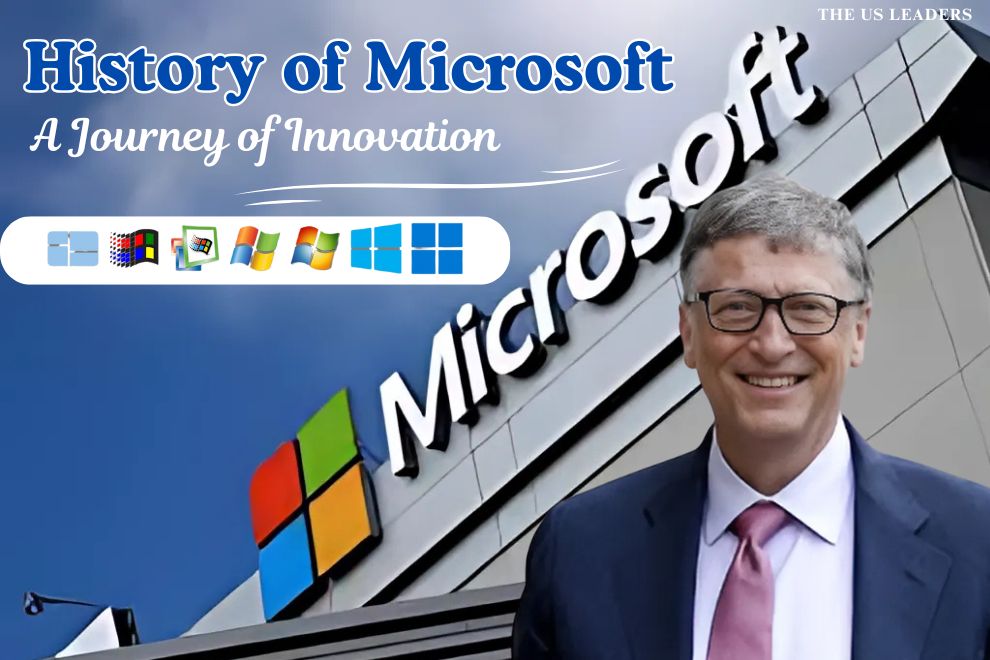Microsoft Corporation, a global technology leader, has transformed the way the world works, communicates, and entertains itself. Since its inception, Microsoft has been at the forefront of technological innovation, offering products and services that have shaped the modern digital era. Let’s take a closer look at the fascinating history of Microsoft, its milestones, and the impact it has had on the tech industry.
The Beginning: Foundation and Early Years (1975-1980)
- Founded by Visionaries: Microsoft was founded by Bill Gates and Paul Allen on April 4, 1975, in Albuquerque, New Mexico. The duo shared a passion for computer programming and envisioned a future where personal computers would be accessible to everyone.
- First Product: Their first product was a version of BASIC programming language for the Altair 8800, an early personal computer.
- Company Name: The name “Microsoft” is a blend of “microcomputer” and “software,” reflecting their focus on software for personal computers.
Key Milestones in Microsoft’s Growth
1980s: Establishing a Strong Foothold
- Partnership with IBM: In 1980, Microsoft partnered with IBM to provide an operating system for its personal computers. This led to the creation of MS-DOS (Microsoft Disk Operating System), which became a huge success.
- Launch of Windows: In 1985, Microsoft launched Windows 1.0, a graphical extension for MS-DOS. It marked the beginning of the Windows operating system line.
1990s: Dominance in the PC Market
- Windows 3.0 and Beyond: The release of Windows 3.0 in 1990 made Microsoft a household name, with its user-friendly interface and improved functionality.
- Office Suite: Microsoft introduced the Office suite (Word, Excel, PowerPoint), which became a staple for businesses and educational institutions.
- Internet Explorer: In 1995, Microsoft launched Internet Explorer, entering the browser wars during the rise of the internet.
2000s: Expanding Horizons
- Windows XP: Launched in 2001, Windows XP became one of the most popular operating systems in history.
- Xbox Gaming Console: Microsoft entered the gaming market with the release of Xbox in 2001, challenging established players like Sony and Nintendo.
- Acquisitions: The company made significant acquisitions, including aQuantive (advertising) and Skype (communication).
2010s: Transition to Cloud and AI
- Satya Nadella’s Leadership: In 2014, Satya Nadella became CEO, steering the company towards cloud computing and AI.
- Azure: Microsoft Azure emerged as a major player in cloud computing, competing with Amazon Web Services (AWS).
- Surface Devices: The Surface line of devices gained popularity for blending productivity with innovation.
2020s: Innovation and Sustainability
- Focus on AI: Microsoft invested heavily in artificial intelligence, integrating AI into products like Office and Azure.
- Acquisition of LinkedIn and GitHub: These acquisitions strengthened Microsoft’s position in professional networking and software development.
- Sustainability Goals: The company committed to becoming carbon negative by 2030, showcasing its dedication to environmental responsibility.
Impact of Microsoft on the Tech Industry
- Standardization: Microsoft’s software products, like Windows and Office, set standards for the industry.
- Accessibility: By making computing accessible and affordable, Microsoft played a significant role in the proliferation of personal computers.
- Economic Growth: The company’s innovations have spurred economic growth, creating millions of jobs globally.
- Technological Advancements: Microsoft’s contributions to cloud computing, AI, and software development have driven technological progress.
FAQs about Microsoft
1. Who founded Microsoft, and when was it founded?
Bill Gates and Paul Allen founded Microsoft on April 4, 1975.
2. What was Microsoft’s first product?
Microsoft’s first product was a version of the BASIC programming language for the Altair 8800.
3. What are some of Microsoft’s most popular products?
Microsoft’s most popular products include the Windows operating system, Microsoft Office, Xbox gaming consoles, and Microsoft Azure.
4. Who is the current CEO of Microsoft?
As of now, Satya Nadella is the CEO of Microsoft. He took over the role in 2014.
5. What is Microsoft’s contribution to cloud computing?
Microsoft Azure is a leading cloud computing platform that offers services like data storage, analytics, and AI solutions.
6. How has Microsoft contributed to the gaming industry?
Microsoft’s Xbox gaming consoles and its acquisition of game studios have made it a key player in the gaming industry.
7. What are Microsoft’s sustainability goals?
Microsoft aims to become carbon-negative by 2030 and has taken significant steps towards environmental sustainability.
Conclusion
Microsoft’s journey from a small startup to a global technology giant is a testament to innovation, vision, and adaptability. Its contributions to the tech industry have been profound, influencing how we live, work, and connect. As Microsoft continues to evolve, its focus on sustainability, AI, and cloud computing ensures its relevance in shaping the future of technology.
Next to Read: The Power of Positive Affirmations: Shaping Your Reality
